#user experience
Text

I'm fed up with "maybe later".
87K notes
·
View notes
Text
tumblr blackout proposal
tumblr mobile has steadily become near unusable these past few updates. not just from a user experience perspective (which is important enough in itself) but also from an accessibility perspective.
examples include the new way the image viewer works (if you can call it "working"), the tumblr live button replacing the profile button, and that newly created blogs will be forced to have their main dashboard tab be the 'for you' page.
the demands of the protest would be along the lines of:
reverse the recent image viewer update
scrap the new users 'for you' page default setting
let us turn off tumblr live indefinitely
increase efforts against spam / porn bots
make reporting abuse and hate speech as easy as reporting as reporting spam
let us go nuts show nuts again... for real this time
remove flashing ads, including not accepting blaze campaigns for posts with flashing in them
commit to improving usability and accessibility, and listening to users!
(suggestions welcome!)
to protest against these usability issues, and inspired by the recent reddit blackout, i propose a 48 hour blackout (where you don't use tumblr at all). preferably of both mobile and web (since web has problems too) but mobile is the focus here.
[edit: a 'blackout' is when you don't log in, or interact with the site at all, for [x] amount of time.]
I suggest from the 30th of June.
this marks the end of pride month (for the "queerest place on the internet") and the start of disability month (since accessibility is a massive issue here).
tumblr office is in San Francisco, USA, so the times and dates will be calculated using their time zone (PDT).
you can find out the times and dates for your timezone here.
i can't afford to blaze this post so please spread it around as much as possible! protests only work if significant numbers show up!
edit: tumblr rejected the blaze campaigns for this post because they know it would hurt them. let's make this an indefinite blackout - it's the best way to get results.
edit 2: plain text version of this post
#again‚ suggestions welcome :)#dogpost#tumblr#tumblr dot com#tumblr.com#tumblr blackout#tumblr protest#accessibility issues#user experience#accessibility#ideally they would just integrate xkit toggles but we know they wont do that lol#tumblr strike
52K notes
·
View notes
Text
It's actually kind of impressive how ill-conceived this whole "Notes Preview" business is. At a single stroke, it's been rendered impossible to curate one's experience even on one's own dashboard – now it doesn't matter that you've carefully followed a group of blogs you can trust not to reblog noxious bullshit, because with every post that crosses your dash there's now a chance that Tumblr will automatically append some random asshole's opinion about that post, in a way that neither you nor the person you're following can predict. Bravo.
36K notes
·
View notes
Text
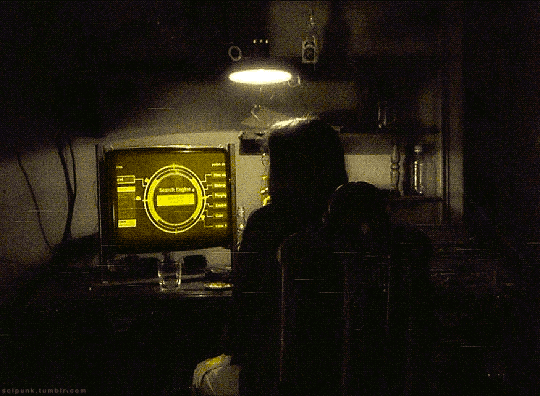






Avalon (2001)
#cyberpunk aesthetic#cyberpunk#scifi movies#00s#graphic design#cyberpunk movies#aesthetic#user interface#dystopian aesthetic#noir aesthetic#computer terminal#user experience#gifs#movie gifs#gifset#film gifs
994 notes
·
View notes
Text
Because my god.
Please signal boost so we can get a good sample!
55 notes
·
View notes
Text
Product design and psychology: The Role of Grinding in Video Game Design
Keywords: Grinding, Video Gaming, Game Design, Player Engagement, Psychological Manipulation

Abstract:
This paper scrutinizes the utilization of "grinding" as a technique in video game design, particularly as a method of psychological manipulation that affects player engagement and behaviour. Case studies are explored to deliver a comprehensive understanding of the practical application of grinding and its implications, all from a product design viewpoint.
Introduction:
The design principles governing video games frequently incorporate mechanisms intended to stimulate player engagement and prolong interaction time. One such prevalent mechanism is "grinding," defined as the practice of executing repetitive tasks within the game environment to achieve specific objectives. While grinding can evoke a sense of achievement, it also carries the potential to induce exhaustion and frustration among players. This study endeavours to explore the intricacies of grinding, its role in game design, and its influence on player experience.
Explanation:
Coined from the concept of persistently "grinding away" at a task, the term "grinding" in the gaming context implies the undertaking of repetitive actions by a player to attain certain results or to advance within the game. In numerous instances, such actions may not directly correlate with the game's primary storyline or objectives but are aimed at accumulating experience points, in-game currency, or specialized items.
Grinding is an omnipresent component across a vast array of game genres, with its prominence notably manifested in Massively Multiplayer Online Role-Playing Games (MMORPGs). In these games, the player's progression and performance are often gauged based on their character's level, skills, and available equipment.
From the standpoint of game design, grinding assumes several roles. It serves to extend the game's lifespan by instituting goals that necessitate substantial time investment. Additionally, it fosters a sense of accomplishment and progression and can encourage social interaction in multiplayer environments. Despite these advantages, critics contend that grinding can lead to monotonous and ungratifying gameplay experiences. The considerable time commitment required by grinding may propel some players towards purchasing in-game enhancements using real-world money, thereby generating additional revenue for game developers.
Further, there is an ongoing discourse concerning the psychological implications of grinding. Its repetitive and rewarding nature might precipitate addictive behaviours and excessive consumption of time, mirroring the effects typically associated with gambling disorders. Through the exploration of these aspects, we aim to shed light on the complex dynamics of grinding in the context of modern video gaming.
Grinding in Gaming: Conceptualization and Design
Grinding typically refers to the act of performing repetitive actions in a game to attain a specific goal, often associated with levelling up, obtaining items, or advancing in-game skills. Although it can give players a sense of progression, it can also serve as a roadblock, encouraging players to consider alternative paths to progress, such as microtransactions.
Case Study: World of Warcraft
Blizzard Entertainment's World of Warcraft (WoW) extensively employs grinding. Players often engage in repetitive tasks like fighting the same enemies, repeatedly battling against non-player characters (NPCs), or completing the same quests to increase their character's level, to gain experience points, in-game currency, or rare items. This grind contributes to a sense of achievement but has also been criticized for sometimes leading to a tedious gameplay experience.
youtube
Case Study: Candy Crush Saga
King's Candy Crush Saga uses grinding as a monetization strategy. As players progress and levels become harder, the option to grind through the game becomes more attractive. Alternatively, players can buy power-ups and boosters to surpass the grind, effectively translating grinding mechanics into revenue for the game developers.
Case Study: Destiny 2
This game provides an example of a 'loot grind.' Players repeatedly complete activities like strikes, raids, or public events to earn 'engrams' – randomized gear drops. The goal is often to collect more powerful gear to increase a character's power level.
youtube
Case Study: Old School RuneScape
In this MMORPG, players might grind by repetitively performing tasks like mining, fishing, or woodcutting. These actions, though monotonous, boost the player's skill levels, enabling them to perform new tasks, quests, or create new items.
Implications for Game Design
Grinding, while a tool to extend game playtime and potentially drive monetization, must be thoughtfully implemented to avoid player fatigue or burnout. Game designers should strike a balance between meaningful progression and repetitive grind, ensuring the game remains engaging and satisfying.
Conclusion
Grinding, as a mechanism of psychological manipulation in video game design, can greatly impact player behaviour and engagement. Striking a balance between challenge, satisfaction, and repetition is vital to ensure a rewarding gameplay experience. As the video game industry advances, it will be intriguing to observe the evolution and refinement of grinding mechanisms and their psychological impact on players.
References:
Sicart, M. (2013). Grinding in Games: Understanding the Appeal. Philosophy of Computer Games Conference, 8-11.
Hamari, J., Alha, K., Järvelä, S., Kivikangas, J. M., Koivisto, J., & Paavilainen, J. (2017). Why do players buy in-game content? An empirical study on concrete purchase motivations. Computers in Human Behavior, 68, 538-546. doi:10.1016/j.chb.2016.11.045
Blizzard Entertainment. (2004). World of Warcraft [Video Game]. Blizzard Entertainment.
King. (2012). Candy Crush Saga [Video Game]. King.
Bungie. (2017). Destiny 2 [Video Game]. Activision.
Jagex. (2013). Old School RuneScape [Video Game]. Jagex.
Yee, N. (2006). Motivations of play in online games. CyberPsychology & Behavior, 9(6), 772-775. doi:10.1089/cpb.2006.9.772
Johnson, M. R., & Woodcock, J. (2019). The impacts of live streaming and Twitch.tv on the video game industry. Media, Culture & Society, 41(5), 670-688. doi:10.1177/0163443718818363
King, D., Delfabbro, P., & Griffiths, M. (2010). Video game structural characteristics: A new psychological taxonomy. International Journal of Mental Health and Addiction, 8(1), 90-106. doi:10.1007/s11469-009-9206-4
Deterding, S., Dixon, D., Khaled, R., & Nacke, L. (2011). From game design elements to gamefulness: defining "gamification". MindTrek '11: Proceedings of the 15th International Academic MindTrek Conference: Envisioning Future Media Environments, 9-15. doi:10.1145/2181037.2181040
#Grinding#Video Gaming#Game Design#Player Engagement#Psychological Manipulation#product design#gaming#user experience#player behaviour#destiny 2#world of warcraft#runescape#old school runescape#candy crush#Youtube
70 notes
·
View notes
Text
A Crash Course to Design Thinking: Empathy
●~•──────── Introduction ─────────•~●
Hello! Today I wanted to talk about UX design. This post was supposed to be longer but Tumblr deleted my draft and I’m feeling (╯°□°)╯︵ ┻━┻ so here is just part one.. We’ll be covering the “Empathy” step which includes:
Exploring the problem space
Conducting User Research
Defining User Personas
I believe that taking time to do design thinking when creating a product avoids bad door knobs and confusing app interfaces. Here’s a handful of hilariously bad UI demos for taste: https://mattw.io/bad-ui/.
Here’s some other common pitfalls:
Too many choices for a user (overcrowded toolbars)
Not enough options for users (accessibility)
Poor feedback (“Did that form actually go through?”)
Inconsistent interfaces (“Do I push or pull on this door…It says push, but has a pull handle!”)
●~•────────What is a prototype? ─────────•~●
A prototype is an early model mock-up of the product you want to build. We’re focusing on digital products in this case, so the product can be an app, website, or any other applications. Prototypes are useful for conceptualizing and visualizing your ideas for the product. It's also meant to showcase the "flow" of using the app from a user's perspective, as well as show the layout and organization of your product.
●~•───────What is the design thinking process? ────────•~●

The design thinking process is an iterative process to approaching designing products. It's not necessarily linear, but we'll walk through what you should consider at each step. In practice, you may find yourself revisiting steps to refine your problem, ideas, and mock-up itself after getting user feedback. Let’s talk about the first step, empathizing!
Part 1: Empathize
●~•─────── Step 1 ────────•~●
⭐ Pick a problem space.
What problem are you trying to find a potential solution for? It could be as simple as "Tumblr’s draft system sucks" or maybe your friend just said "This book tracking app could be better.." Sources of inspiration are everywhere!
Coming up with your own: Think about your own experiences as a user of different products or services. Have you encountered any frustrating issues or pain points that could be addressed with a potential solution? Maybe you struggle with finding parking in your city and wish there was a more efficient way to find available spots. Or perhaps you find it difficult to keep track of all your passwords and would like a more secure and user-friendly password manager. Consider your own needs and experiences as a starting point for identifying potential problem spaces.
Interacting with others: Talk to people in different industries or fields, or attend events or conferences related to areas you're interested in. This can give you exposure to different perspectives and potential problem spaces that you may not have considered before. For example, if you're interested in education technology, attending an education conference could help you identify common challenges and needs in that space. Or even reading through r/professors or talking to your own instructors!
📚 Resources:
https://www.uxchallenge.co/ - List of problems
https://uxtools.co/challenges/ - Walkthroughs on tackling specific problems focused on UX skills
●~•─────── Step 2 ────────•~●
⭐ Understand the users affected by the problem.
Once you have a problem space, don’t jump ahead and start thinking of solutions! First, we must understand the problem from a variety of user perspectives. Why? Because by understanding the users affected by the problem, we can gain insights into their needs, pain points, and behaviors. This understanding can help us develop effective solutions that address their needs and improve their experiences.
There’s a variety of user research methods we can use to collect user perspectives, this is just a handful of them:
Survey: If the product already exists (and it’s yours), you could add a survey in-app for feedback on a specific feature. Otherwise, you can create a survey assessing a user’s impressions on a problem they might have (“Do you encounter this..?”, “Would you be interested in a product that..”, “What kind of features are most important to you?”).
User Interviews: This involves talking to users one-on-one to gain insights into their experiences, needs, and pain points. It's important to ask open-ended questions and actively listen to their responses to understand their perspectives fully.
Online Research: Checkout user impressions on products by looking up existing reviews online. This can be from Amazon, Reddit, the app store, whatever. To make this kind of data useful, you can identify patterns of what is often mentioned or common pain points users express online. It’s going to be better if you can connect more directly with users about your specific problem area, but this is something to start with.
📚 Resources: (I love nngroup…)
https://www.nngroup.com/articles/ux-research-cheat-sheet/
https://www.nngroup.com/articles/guide-ux-research-methods/
https://www.nngroup.com/articles/which-ux-research-methods/
●~•─────── Step 3 ────────•~●
⭐ Create User Personas to represent the types of users your product will be addressing the needs of.
The user persona shouldn’t represent a specific (real) person, rather it should represent a realistic archetype of a person. I think of it as like a character sheet. For example, if we’re creating an app for book tracking our user personas might be “Reader Rhea - A college student looking to organize books from her classes” or “Bookworm Bryan - A young adult looking to get book recommendations”. The persona should be based on the research you did prior. Creating user personas will help you better understand and empathize with your users, and make design decisions that align with their needs and goals.
Here’s a quick checklist of what to include in a user persona:
Name: Give your persona a name that reflects their characteristics and needs.
Demographics: Include details like age, gender, occupation, and location.
Goals: What are the persona's primary goals and objectives when using your product?
Pain points: What are the main challenges or problems that the persona faces when using your product?
Behaviors: What are the typical behaviors and habits of the persona when using your product?
Motivations: What motivates the persona to use your product?
Personality: What are the persona's personality traits and characteristics?
Scenario: Describe a scenario in which the persona would use your product or service.
Quote: Include a quote that summarizes the persona's attitude or perspective.
📚 Resources:
https://about.gitlab.com/handbook/product/ux/persona-creation/
https://www.nngroup.com/articles/personas-study-guide/
https://www.justinmind.com/blog/user-persona-templates/ - lots of examples and explanations here
●~•─────── That's All! ────────•~●
Phew, ok that is all for now! In a future post, I will go over the second step in the design process. If you have anything to add to this topic, pls share! :D Thanks for reading
#ux design#user experience#ui ux course#prototyping#design thinking#tech#design#creative#user research#comp sci
59 notes
·
View notes
Text
Dear Agents, Writers are not Psychic, please auto include YOUR Trigger Warning Policies
Some background, because no one is going to click on the profile part of the page. I'm aware of that.
The first part of this is that I have an Anthropology degree, which the majority of the classes are concentrated in Systems, such as racism, sexism, etc. The BA would have had a certificate if I didn't have to travel 2-3 hours one way in order to get the certificate.
The second part is that I've been around the publishing industry inside of it, published by it, reading up on the history of it, reading an astounding number of writing advice manuals to track down one diagram and crying over that, to know how the industry works. I know I don't list all my credentials, but seriously, how long do you want a bio?
The third part is that I've worked with websites, UX (User Experience) and the whole idea of User Experience is that even if it functions, it doesn't mean it works without the ability to interface with humans.
And lastly, I have C-PTSD. I know how fucked up PTSD can be. And what a trigger feels like. What a flashback feels like. It's not OMG, I feel icky and have no emotional toll. It's I need a therapist to manage my triggers because it wears me out to have an anxiety/depression attack. And I know how fucked up triggers can be. I've written blog posts about it.
You are not everyone.
User experience is about Empathy. This means you realize: You are not everyone else. Everyone else is not you. They are not going to do what you think is best, so how do you make everyone happy through best practices?
Other agents aren't going to WANT what you want. They are selling different genres, they have different life experiences. Just because it works for you doesn't mean it works for anyone else. By saying, Well, every agent should do as I want, isn't helping anyone.
History
Before the 1900's, most stories were serialized, and only the popular ones got full books. Before the 1960's-1970's according to Steven King's On Writing, there were no Agents. You simply submitted to the publisher. (Agents should know their publishing history, I'm just saying... you should know the history of your own profession.)
Agents became a requirement in the 1990's, not the 1980's. Before that, you could hire a lawyer. And many early agents were lawyers.
This meant because of print tech, and the requirement to join a union, the way to submit to an agent was EXACTLY THE SAME.
The Neurdivergent rejoice. They are happy with this.
But then the internet hit in about the mid-2000's and then agents started to be paid more and more like crap. And then with the plummeting enjoyment, and the publishing industry realizing that they could dump people from their staff and PUT IT ALL ON THE AGENTS, the standardization of the forms fell with it.
Why would this be in UX terms? Well, now agents aren't doing it "for the money" and in basic psychology this means they want more individualistic things. You're likely to do it for the side money, you want to have it the way you want to have it, because what's the point if it's not fun? Thus the standardization in the industry falls apart as people put forth their own individualistic wills. (Do you need the fancy psychology terms. I can do that.)
And then with the internet the industry and everyone started to MAKE UP THEIR OWN RULES.
The ND people are crying. WTF.
Especially the autistic people who like structure and rules that are even and easy to understand. (I had a long conversations about this. I did the research.)
Why would someone want a different trigger policy than me?
People represent different genres and have different aims
This is where the empathy and the ability to actually go through other agent blogs comes in. You need to be able to read other agents, their genres and realize that writers have different genres and combination of genres they are submitting to.
You might be looking ONLY at contemporary Romance, but there are agents that represent Horror, Thrillers, and Mystery and dark fantasy. Even without that, there are subgenres of fiction that might *require* triggers be included. Abuse Romance is a thing (50 Shades) and there is Dystopian SFF.
The agents that rep these genres want the thrill of the surprise. The agent wants to not have to know what's up front to experience the story first hand. This is what I've read from those agents. The ones that rep Horror are more than likely to not want trigger warnings from my asking over and over again. And they are less likely to list a no list to the trigger list.
But those self-same agents *also* represent things like Romance. Because like everyone else on the planet, people like more than one genre.
BTW, out of all of the agents, the agents that rep Romance from my asking around, because no one else is crunching data are more likely to want trigger warnings, but I'm telling you it gets tricky when you're mixing Romance with Supernatural, Mystery, and Fantasy.
BTW, Fantasy and SFF as genres, RANGE WILDLY. So the triggers are going to be all over the map.
And for the people who rep Horror, etc, the reason why your (US) romance agents want trigger warnings is because romance works on a totally different emotional basis compared to Horror. Expecting your potential clients to know that and your fellow agents to follow suit when they have a totally different agenda is not reasonable.
This is where UX comes in. YOU, agent, Have do the work to bridge the gap between you and the other agents. If you all are going to have different policies about triggers, then writers are going to also do their best guesses and try for a middle.
People have different triggers than you.
I have a trigger around melamine floors. Do you have a trigger around melamine floors? Does it make your spine go cold it makes my spine go cold. Do you get a mild headache thinking about them especially if they are white? No? You don't?
Would it be reasonable for me to ask you to guess that about me?
Would it be reasonable for you to take all of my feelings about it because I never informed you this was the case?
If you're getting my drift:
LIST YOUR TRIGGERS. Not everyone has the same triggers. Write it out.
Asking people to manage and guess your invisible triggers is unreasonable. It does harm to others. You don't want them to do harm to you, it's your responsibility to let people help you by making it known. 100% I know this as a person with C-PTSD and also with Sensory issues. It's not other people's responsibility if they don't know about it. It is 100% mine to let them know if I have an issue and it's too much. If they don't respect you after you have let them know, then the onus is on them, not before then. It's also anti-ND to expect people to *guess* your triggers. But it's also better for your mental health so people don't submit something you don't want.
Trauma *is* fucked up. But part of recovery is taking control and taking control of your triggers and processing them. So let people help you by you listing your triggers you don't want to see or be warned about in fiction.
Set clear boundaries
Goal-setting: Ask yourself questions like “What is the goal in setting a boundary or needing to set a boundary?”
Start small: Setting boundaries can be hard and uncomfortable. The key is to start small and focus on one at a time.
Be clear: Focus on what you want as clearly as possible.
Practice: If thinking about setting a boundary makes you nervous, write out what you want to say beforehand or practice stating a boundary in the mirror.
Keep it simple: Less is more with boundary setting. Try not to overload someone with too many details at first. Just pick the main thing that is bothering you and focus on that.
From the website.
Make your boundaries clear. If you don't list triggers, don't ask for a trigger list on your forms, don't make it known on your website, assume everyone is going to do it that everyone agrees with you, and don't put it where people can see it, then you are responsible for the result and in making it more clear. You can't act like a victim if you haven't set clear boundaries.
Act like an adult and set your boundaries.
BUT WHY would anyone write it/not want a warning as an agent?
Some people like to deal with their triggers in fiction. It's distant, not real, it gives them a sense of control, like a safe word in BDSM. A lot of reading of horror and thrillers in particular are when people are anxious. This is according to Stephen King that greater fear means a spike in his sales. (Interviews, Writing Excuses). You should be paying attention to that... just saying. This is marketing. You are also (unfortunately) part marketer, not only lawyer.
Some people are using it to ask for rights. Buy being clear as a victim of abuse, etc that helps people feel empowerment by *stopping it*.
If people want to stop homophobia, that means they have to talk about homophobia. Taking power back from the oppressors feels good. This is like step 3 of recovering from trauma, though. I've covered previously that after victimhood, you should be aiming for survivor, but the aims of a social justice person are transformation of trauma and that has to be somewhat different and is somewhat opposed to being a victim.
Everyone is healing in a different way and speed than you are. Again, everyone is not you. This is marketing too.
BUT OTHER AGENTS SHOULD DEAL WITH MY POLICY
No, they shouldn't. You are not everyone else. See the UX rule.
How Do I Fix it?
Put on your forms a trigger policy. Try to get other agents to also put on a trigger policy standard.
You can copy-paste the following and cut the irrelevant:
Trigger Warning Policy
I would like you to give a trigger warning: Yes/No.
I would like you to give a trigger warning:
In the query
When I request fulls.
You should not submit if your manuscript has:
You can submit if your manuscript has, but warn me:
Skip trigger warnings for these genres:
[List genres]
Listed nicely and UXed like that with the bold? Yes. Makes it easier to read.
Where should I put it?
There's a fancy UX term for this, but the basics are: If it's important to you, you will LIST it in multiple places. And since writers, even if they wanted to be aren't psychic at grand distances and are submitting to you from places like Australia (because you should know that) and from other countries. They will have no clue what you want if people want different things. So all of these places.
Manuscript Wishlist
Your Profile on your website
Query Manager (You can put it at the top and sometimes with the query part)
Submissions Guideline Page (especially if you don't have Query Manager)
Why not on Twitter?
No one is going to read thousands of tweets and work through your tweets that are going to disappear to find your trigger policy. !@#$ No. Too much time, too much effort, those things disappear, and those are not for permanent information.
If it's Absent...
The user will assume if it is absent in the query manager, especially, there is none, and they can do as they like or guess. Absence is assumed this way.
If you need the long psychological reason why, in UX this is true, then imagine it this way (extended analogies are my jam):
Cashier A is not labeled. Cashier B is not labeled in a store.
You want to check out of the items you've collected in the store and not steal things. You're likely to do as you like. And choose between Cashier A and Cashier B.
Cashier A is labeled now: Returns.
Cashier B is labeled with a cart icon.
You want to check out. You're likely to choose Cashier B.
Therefore, if it's absent on the form, people will do as they like. Basic marketing, psychology and UX. If you want it to be known, you label it.
Mechanically list it. Put it visible everywhere.
Make the form standard on Query Manager and Manuscript Wishlist
Even better yet is to make it standard on agent websites.
Here is the contact for them.
MSWL: https://www.manuscriptwishlist.com/contact/
Query Manager: https://querymanager.com/contact.php
Here is what you can write:
Hello,
[Honest reasons you love their website]
I would really like a standard form for trigger warnings. The form would look like something like this:
I would like you to give a trigger warning: Radio buttons: Yes/No.
(Require) If no, then the rest of the form doesn't need to be filled out.
I would like you to give a trigger warning:
If yes require...
Radio buttons for:
In the query
When I request fulls.
You should not submit if your manuscript has: (Optional)
You can submit if your manuscript has, but warn me: (Optional)
Skip trigger warnings for these genres: (Optional)
[List genres]
Thank you for your time and consideration.
Sincerely,
[Name]
BTW, I put programming and UX info into the letter to make it easier on them. Because again empathy and again, I'm HSP, so I can't help it. I want to make implementation as easy as possible.
Please don't abuse the word "Trigger"
BTW, Please do not for the sake of people with C-PTSD and PTSD say something you "dislike" is a "trigger." Dislike should be Content warning. And in that case just list it with your usual "Don't send me this."
Saying something is a trigger because you dislike the trope–please don't abuse the word trigger this way.
Yes, there are low level triggers that don't make sense. I've covered melamine floors before as a trigger for me and institutions. But usually I don't trip out if it's in fiction. But that might be you. Again. Not everyone has the same triggers for fiction, because you are not everyone. Or as Mr. Rogers liked to say loosely You are unique.
While you're at it...
BTW, I also listed other things that agents disagree on. Just do it as a part of your policy to list them.
Conclusion
To me, at this point, if you don't list it and rep a bunch of different genres, I'll choose what I guess is best. If you hit more than one, then yeah, I'm left guessing.
And as an HSP, agents getting really mad at both ends, to the point they are willing to get irritated, I can't take that on. Writers are left confused and in the middle. So instead, just use the form I listed. I mean, it's not that hard to copy-paste.
Your little bit of work up front will help everyone else. Make it a standard that all agents list a trigger warning policy EVERYWHERE it can be visible. We can't guess and no one is going to read all of your Twitter.
Marketing ideas also work towards your clients. You want them to do a certain behavior, then you have to also market yourself well, which means you need to be making your trigger policy known and visible.
#dear literary agents#user experience#psychology#marketing#querying#querying standards#triggers#trauma
11 notes
·
View notes
Text

8 notes
·
View notes
Text
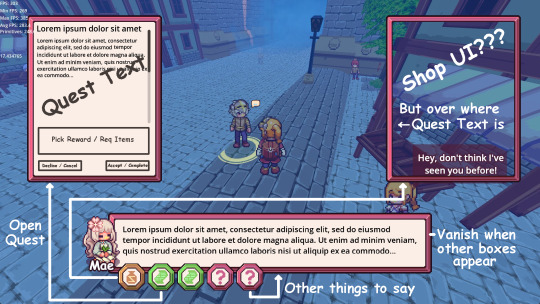
Experimenting with UI for Memora Wanderer. Most people prefer it if the dialogue goes at the bottom in the center, so I'd need buttons down there to open up new windows like quests and shop ui.
15 notes
·
View notes
Text
If all the updates everyone hates are to please stockholders and investors or whatever, why can't we just go to them directly and tell them what would actually make us want to use the product in a way that benefits them? Like they're not asking for round corners and constant changes just to make us miserable or to have something nice to look at, right? They want profit, they want success, they want people to use the product in ways that one way or another makes a profit, right? Right? And they're out of touch and have no clue what people actually want so they're appeased by the nonsense updates being rolled out, and they probably don't know they're out of touch and actively alienating and driving away their userbases, right? If I'm understanding this correctly... The userbase and the people who the updates are actually for both want the product to be good and appealing, no? I'm definitely missing something, because the solution to this phenomenon seems very simple and even mutually beneficial. Not necessarily easy, but very simple.
#sfw#personal#ok to reblog#tech#user interface#user experience#idk I still haven't figured out good tags for this and it doesn't help that I keep forgetting everything I've ever used every time I tag#this is mostly just a personal ramble but I'd love to know more aboutthe reason this isn't as simple as it seems
7 notes
·
View notes
Text

I always thought sweeping photos of the woodland canopy could have translated better to digital. The image gets mangled as it shrinks, and the quality drops to make it "acceptable." At least in the mind of a UX Guru somewhere.
A chat with someone I was showing a picture from last year's autumnal plumage altered my perception. Yes, they're a bit rubbish from a purely technical standpoint. And yes, a lot of detail is lost.
But they're relaxing to look at. The colors meld together and become an abstract blur. If the platform allows it, opening the image up full screen and pinching and dragging takes on its own charm.
So I tried it.
And they were right. There is something restful about reflecting on these images and letting the mind drift and the fingers wander. Just explore the shapes and colors and patterns aimlessly for a minute or two.
Let's go back to that original dig at the UX Ninjas. Aside from anyone having Ninja in their job title being taken outside and given a stern talking to, maybe letting people enjoy the image the poster uploads is a "good thing." Your thinking might be constrained by the dimensions of my device, but my eyesight isn't.
8 notes
·
View notes
Note
A common issue I feel in open world games is that traversing the landscape feels like a chore. How do you make even just moving about in the landscape fun?
I give you exhibit A:
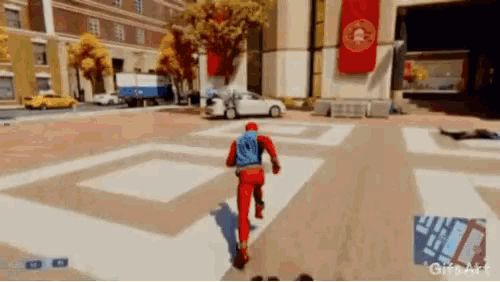
If I had to try to reduce fun locomotion into a recipe, I would say that the journey must feel (not necessarily be) fast, responsive, and flow.
Fast

The player must be able to get to their destination within a reasonably short time frame. The longer a player has to do a specific activity without interruption, the easier it is to get bored of it. Humans have an innate enjoyment of moving quickly. Added touches like motion blur, doppler-directional sound effects, visual effects, and the like should combine to create a sense of speed.
Responsive

It’s extremely frustrating when a player desires to do a thing, but cannot do so at the precision that they want. It’s the sense of frustration we get when we picture an image in our mind’s eye, but our physical attempt to draw it looks hideous in comparison. That gap between expectation and actual results result in frustration. The control scheme for the character movement must allow for players to be precise as the game makes them feel they should be. Animations should not only capture the desired speed and directionality of the player, but should also direct the player character to locations the player wants to go.
Flow

Flow here means that the experience of moving should feel smooth. Avoid hard turns, large camera angle changes, or sudden changes in speed. Movement of both character and camera should be done in smooth arcs. Hard angle changes feel like impacts, breaking the sense of speed and hurting the experience. Each motion should smoothly blend from one to the next. Acceleration should ramp up and down, starting off slow, ramping up sharply, and then easing off again once the desired speed is reached.

These core qualities combine to form a fun, engaging navigational experience. Players need to feel a sense of speed so they don’t get bored with traversals. Locomotion must be responsive, so players feel like they are going where they want when they want. And finally, the experience should flow pleasantly and smoothly, without any jarring impacts or interruptions to the feelings of movement.
[Join us on Discord] and/or [Support us on Patreon]
Got a burning question you want answered?
Short questions: Ask a Game Dev on Twitter
Long questions: Ask a Game Dev on Tumblr
Frequent Questions: The FAQ
#animation systems#movement systems#game feature breakdown#game design principles#visual design#user experience
77 notes
·
View notes
Text
Honestly, the idea of implementing Discord-style reactions on Tumblr isn’t a completely terrible one.
Tumblr likes are functionally meaningless save as a mechanism for popular blogs to keep score anyway, so letting folks effectively colour-code their likes for individual posts by choosing a symbol to associate with them wouldn’t do any particular violence to the site’s functioning – it’d just get subsumed into the post’s overall note count.
However, I suspect that suddenly having dozens of icons to choose from when liking a post would be an intimidating adjustment for the site’s established userbase; it might be best to start gradually, with a smaller set of options – perhaps just three or four.
And you know, since we already have hearts
39K notes
·
View notes
Text


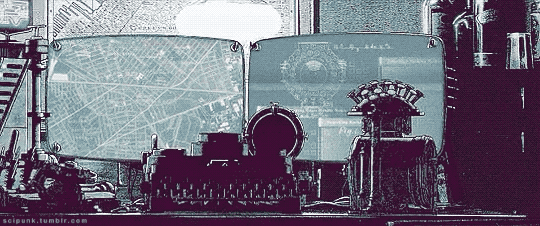

The Animatrix (2003) - A Detective Story
#the animatrix#film noir#scifi#animation#cyberpunk aesthetic#neo noir#anime#virtual reality#hacker#dystopian society#private investigator#2d animation#gumshoe#tech gadgets#forensics#telephone#hacking#user interface#user experience
227 notes
·
View notes
Photo
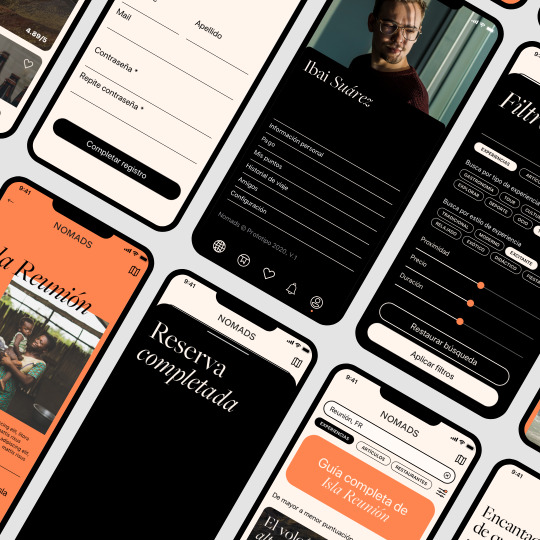

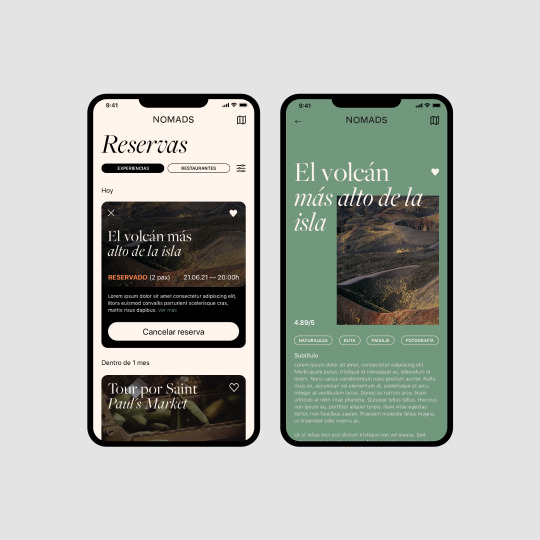



Curso de Especialista en UX-UI 2019-20. Proyecto Final de Sergio Pérez Paqué: estudio y diseño de app para Nomads.
#especialista en UX-UI#especialista UX-UI#UI design#UX#Experiencia de Usuario#diseño UX-UI#Sergio Pérez Paqué#Nomads#app#app design#diseño app#UX-UI design#diseño de interfaz web#User Experience#User Interface#diseño interfaces#diseño gráfico y ux-ui#lagauss#La x Gauss#La Gauss#GaussMultimedia#Gauss Multimedia#Sergio Paqué
95 notes
·
View notes